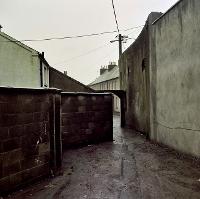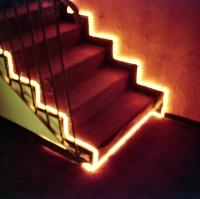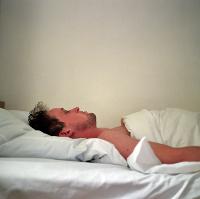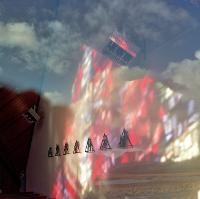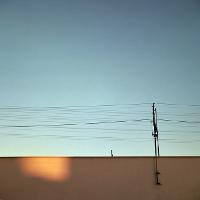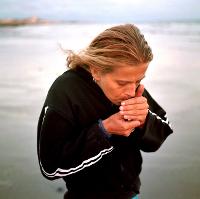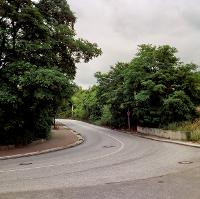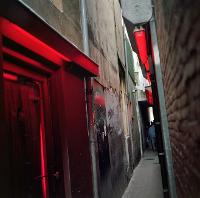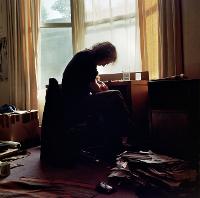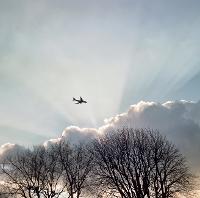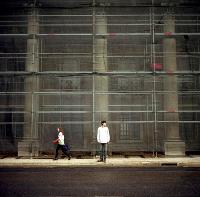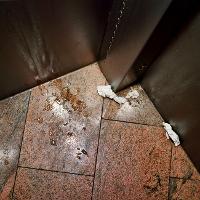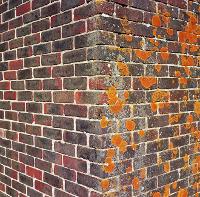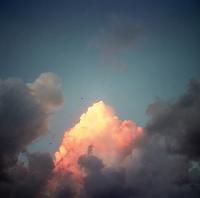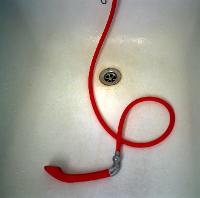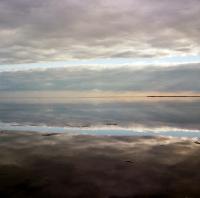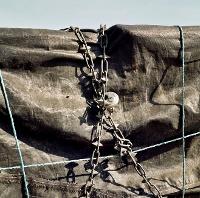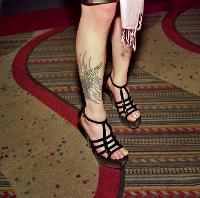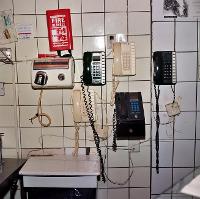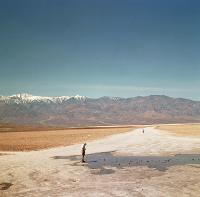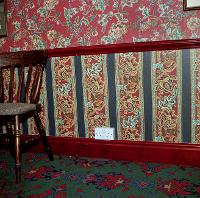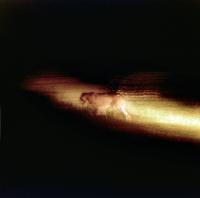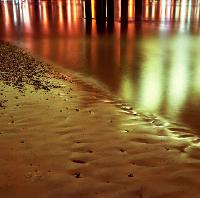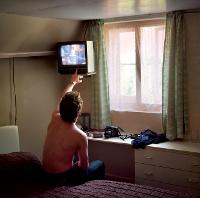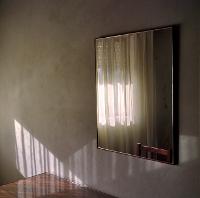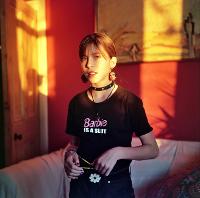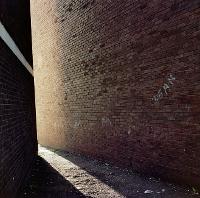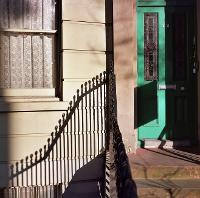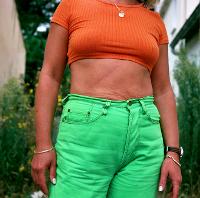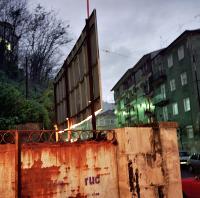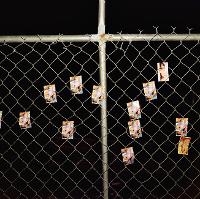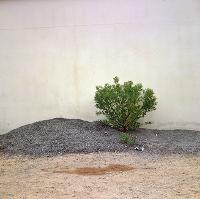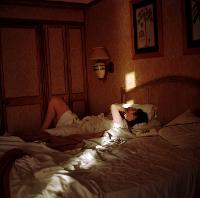Vital Signs
1997-2002
Marcus Haydock's photographs add weight to the idea that photography can be as much to do with sensing as it is with seeing. Like other visual artists and writers, Haydock tries to persuade us that the world turns not only on dramatic events, played out on an epic scale, but on more subtle, barely traceable forces that are continually folding in and out of one another, all around us, at all times. It is here, Haydock's work insists, in the familiar patterns of the everyday, that the world we inhabit and that we make for ourselves can offer up its secrets. Or, at least there are times when we can sense them: in the sudden configuration of a red shower attachment, for example, or in light reflected by a mirror. Haydock's sense is that certain delicate energies are at work here, energies which at times are somehow held in the balance, and become tangible, become felt. Revelation seems to be too strong a word for this feeling, because the moment does not exactly declare itself; in Haydock's work it is not gestural or expressive, and, we might imagine, it is mostly not 'anticipated' - nor is it particularly decisive. Nothing, we feel, is dependant upon it and no specific meaning is waiting to be revealed or understood. We might be tempted to describe this moment in terms of coherence, a glimpse of some form of order, of things falling into place. But these moments, so beautifully preserved by Haydock's camera, would be more correctly referred to as a falling out of place, when this confluence of forces cuts through our habitual acceptance of the world. 'There is a part of everything which is unexplored,' said Flaubert, 'because we are accustomed to using our eyes only in association with the memory of what people before us have thought of the thing we are looking at. Even the smallest thing has something in it which is unknown.' It is this sense of the unknown in the familiar that Marcus Haydock has discovered in these photographs. And with it comes possibility, the gift of the world opening up and seen again, as if for the first time.
David Chandler
Writer & Curator
Vital Signs
1997-2002
Marcus Haydock's photographs add weight to the idea that photography can be as much to do with sensing as it is with seeing. Like other visual artists and writers, Haydock tries to persuade us that the world turns not only on dramatic events, played out on an epic scale, but on more subtle, barely traceable forces that are continually folding in and out of one another, all around us, at all times. It is here, Haydock's work insists, in the familiar patterns of the everyday, that the world we inhabit and that we make for ourselves can offer up its secrets. Or, at least there are times when we can sense them: in the sudden configuration of a red shower attachment, for example, or in light reflected by a mirror. Haydock's sense is that certain delicate energies are at work here, energies which at times are somehow held in the balance, and become tangible, become felt. Revelation seems to be too strong a word for this feeling, because the moment does not exactly declare itself; in Haydock's work it is not gestural or expressive, and, we might imagine, it is mostly not 'anticipated' - nor is it particularly decisive. Nothing, we feel, is dependant upon it and no specific meaning is waiting to be revealed or understood. We might be tempted to describe this moment in terms of coherence, a glimpse of some form of order, of things falling into place. But these moments, so beautifully preserved by Haydock's camera, would be more correctly referred to as a falling out of place, when this confluence of forces cuts through our habitual acceptance of the world. 'There is a part of everything which is unexplored,' said Flaubert, 'because we are accustomed to using our eyes only in association with the memory of what people before us have thought of the thing we are looking at. Even the smallest thing has something in it which is unknown.' It is this sense of the unknown in the familiar that Marcus Haydock has discovered in these photographs. And with it comes possibility, the gift of the world opening up and seen again, as if for the first time.
David Chandler
Writer & Curator


